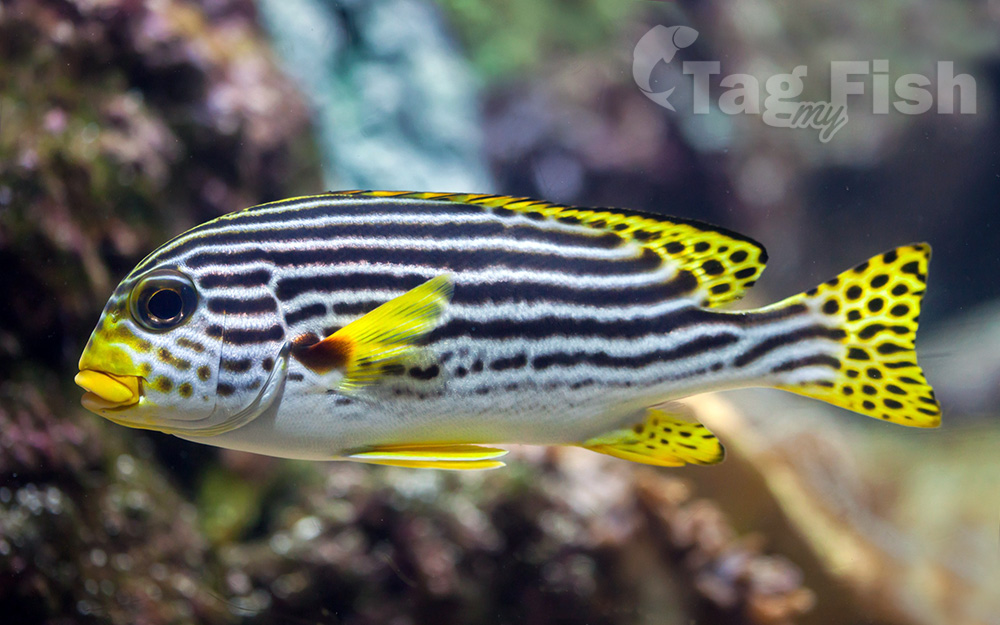Yellowbanded sweetlips
(Plectorhinchus lineatus)

Classification
General data
Description
Plectorhinchus lineatus has fleshy lips which become moderately swollen with age, it has 6 pores on its chin but has no median pit. The dorsal fin contains 12-13 spines and 18-19 soft rays while the anal fin has 3 spines and 7-8 soft rays.
The overall color is light grey which becomes white on the belly. It has prominent yellow lips and the upper part of the body is marked with a large number of broken, diagonal black stripes. The fins are yellow, the caudal, anal, and dorsal fins have black spots and the pelvic fins have red spots at their bases. The juveniles have a few horizontal to slightly angled dark brown bands, these break up as the fish grows until the color of the body looks dark chocolate brown above, broken up by a web of thin white lines running over the back. with continued growth, the wide brown bars on the lower flanks break up into spots, which shrink farther as the fish grows.
This species attains a maximum total length of 72 cm (28 in).
Distribution
Plectorhinchus lineatus is found in the eastern Indian Ocean and western Pacific Ocean. Its range extends from Indonesia east to Philippines and New Ireland, north to the Ryukyu Islands and Ogasawara Islandss, south to New Caledonia and Australia.
In Australia it is found at Scott Reef in Western Australia, Ashmore Reef in the Timor Sea and along the Great Barrier Reef as far south as the Capricorn Islands and the Gold Coast Seaway in Queensland.
Habitat and biology
Plectorhinchus lineatus occurs in deep waters, at depths between 1 and 35 m (3 ft 3 in and 114 ft 10 in), in both the inner and the outer reefs. Here it may be encountered either singly or in groups along coral slopes in clear water. The juveniles are solitary and are found on shallow, sheltered reefs. Typically nocturnal, they forage on open areas of sand and in beds of seagrass for benthic invertebrates during the night and resting during the day.
Spawning aggregations have been noted off Palau around the new moon, this oviparous species forms pairs to spawn.
During the day they can often be found resting near coral brommies, columnar outcrops of coral which are often exposed at low tide.











